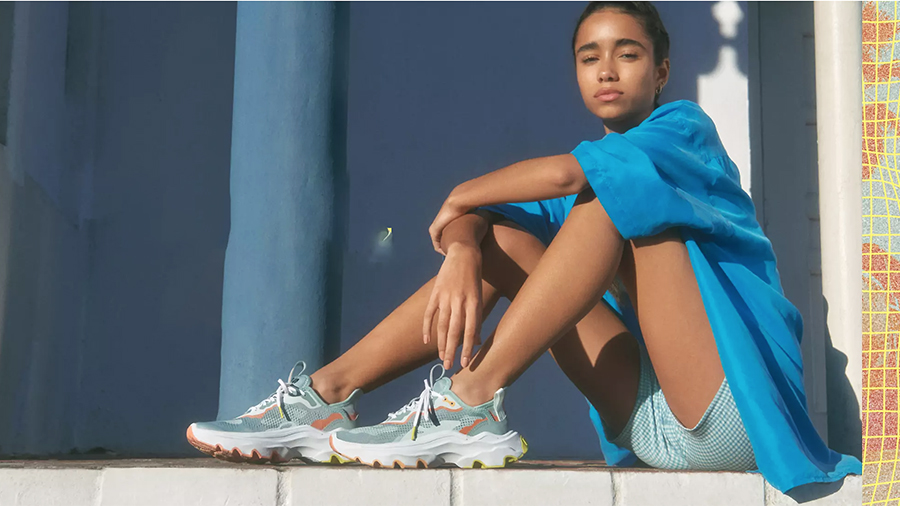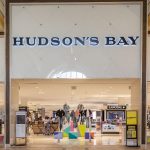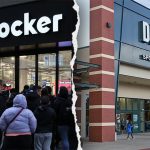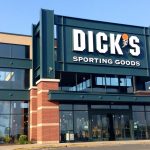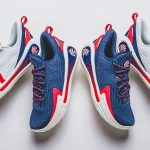Columbia Sportswear exceeded its fourth-quarter outlook, primarily driven by its direct-to-consumer (DTC) brick-and-mortar and e-commerce businesses even as wholesale shipments fell short of expectations. The combination of net sales growth, gross margin expansion, and SG&A leverage fueled an 18.7 percent operating margin in the quarter.
Fourth-quarter EPS of $2.39 per share came well ahead of Wall Street’s consensus estimate of $1.79, and sales for the quarter beat Wall Street’s consensus estimate of $1.07 billion.
Fourth-quarter net sales increased 23 percent to $1.13 million from $915.6 million in the 2020 fourth quarter, reflecting “strong consumer demand” that fueled DTC growth and higher Fall 2021 wholesale shipments. The company’s DTC business increased 33 percent, and wholesale increased 13 percent in the period. Within the DTC business, brick-and-mortar increased 39 percent, and e-commerce increased 25 percent.
“Even as consumers return to in-store shopping, this holiday season our e-commerce sales continued to grow rapidly,” shared Tim Boyle, Columbia’s chairman, president and CEO. “In our wholesale business, Fall 2021 sell-through rates were exceptional. Despite our best efforts to deliver products to our retail partners, wholesale sales were constrained by supply chain disruptions.”
“Compared to pre-pandemic fourth quarter 2019 results, our DTC brick-and-mortar business increased 8 percent, and our DTC e-commerce increased 76 percent. Even though supply chain disruptions constrained growth in wholesale, all 2021 sell-through exceeded expectations, and our retail partners are well-positioned to exit the season with minimal carryover inventory,” said Boyle. He also noted that the company’s retail partners are well-positioned to exit the season with clean inventory positions, and orders for Spring 2022 and Fall 2022 product lines were said to be “phenomenal” as retailers strived to meet demand.
“In 2021, our global DTC business represented 47 percent of net sales, including our e-commerce business, which represented 18 percent of total net sales,” Boyle detailed. “We achieved an important milestone with full-year 2021 net sales and diluted earnings per share coming in 3 percent and 10 percent above 2019 levels, respectively.
Mountain Hardwear was the fastest-growing brand in the company’s brand portfolio in 2021, with full net year sales increasing 33 percent, followed by Colombia, which increased 28 percent. Growth was broad-based by channel, with the company’s DTC business growing 33 percent and wholesale growing 18 percent for the year.
Columbia brand net sales increased 28 percent in the fourth quarter and grew 28 percent for the 2021 full year. Boyle said growth was broad-based across outerwear, sportswear and, to a lesser extent, footwear. “We successfully executed our largest product innovation launch in the company’s history, Omni-Heat Infinity. The launch featured a global multichannel marketing campaign that included traditional, social and digital media outlets,” he said.
Sorel‘s net sales increased 9 percent in the quarter and the full year. In the quarter, net sales growth was led by strong performance in the winter style category. “In addition to Sorel’s DTC e-commerce focus, the brand is fostering strategic retail partnerships to elevate the brand at wholesale,” Boyle shared.
“Sorel’s successful evolution to a year-round function-first fashion footwear brand is evident in the breadth of popular non-insulated styles,” Boyle detailed on a conference call with analysts. “To put this in perspective, in 2021, only 15 percent of Sorel’s North America sales were in the insulated winter utility boots that used to define the brand. Eighty-five percent of sales were in the non-insulated boots, wedges, heels, sneakers, and sandals.”
Boyle said they see a clear path for Sorel to be a $1 billion brand after paying less than $10 million for it over 20 years ago.
“Today, with this goal in mind, we’re investing in demand creation and product to fuel growth in 2022 and beyond,” he outlined. “We anticipate Sorel’s growth rate to accelerate in 2022 as our factory partners scale capacity. For the year, we anticipate Sorel’s net sales growth to approach 30 percent.”
Prana net sales decreased 7 percent in the quarter but were up 8 percent for the full year. Boyle said lower net sales reflected the impact of delayed Fall 2021 inventory receipts and a soft DTC e-commerce business. Still, he was encouraged by Fall 2021 sell-through rates with its wholesale partners.
“During the quarter, Prana had strong sales with its popular stretched Zion product platform as the brand transitions to its new high-performance, sustainable ReZion fabric,” he shared. “In 2022, we expect continued focus and growth in all channels as new leadership sharpens the brand’s focus.”
Mountain Hardwear net sales increased 30 percent in the fourth quarter and grew 33 percent for the year. “The brand’s success in 2021 is not just about the growth rate; it’s about the quality of that growth that’s most encouraging,” said Boyle. “The success of new products and distribution expansion with strategic retail partners fueled high-quality growth and the strongest gross margin performance in over a decade.”
Boyle said Hardwear’s net sales growth was led by strong Fall 2021 wholesale performance and healthy DTC gains. He also said that strong sell-through was broad-based across snow sports, sportswear, and popular stretch-down collections. The brand added over 350 new distribution points in the season with “strong sell-through performance noted at top retailers.” He said it expected continued Mountain Hardwear net sales growth in 2022.
“Management is keenly focused on solidifying the brand’s identity, growing brand awareness and building on the successes of 2021,” Boyle continued. “We are also investing in talent to strengthen the brand team further and scale the business.”
The company’s consolidated U.S. net sales increased 27 percent in the fourth quarter and 28 percent for the full year. In the fourth quarter, U.S. DTC net sales increased by low-40 percent, and wholesale sales increased in the low-double digits.
“Our U.S. DTC brick-and-mortar business generated positive same-store sales growth compared to fourth quarter 2019 levels,” Boyle explained. “This notes the first positive same-store sales performance over 2019 since the pandemic began. To support our retail partners during the peak Black Friday Cyber Monday sales period, we decided to constrain U.S. e-commerce marketing to slow online demand and prioritize wholesale shipments. Had we not prioritized wholesale shipments during this period, our e-commerce sales would have been even higher. Overall, U.S. wholesale shipments performed largely in line with the outlook provided on the last call as supply chain constraints limited upside potential during the quarter.”
In the international markets, most regions experienced favorable recovery trends in the fourth quarter. Boyle said government efforts to contain the virus impacted store traffic and consumer demand in China and in Japan. Latin America, Asia Pacific region (LAAP) fourth-quarter and full-year net sales increased 8 percent.
China sales grew in the mid-teens in the fourth quarter, primarily reflecting higher Fall 2021 wholesale shipments and, to a lesser extent, DTC growth. Lower store traffic resulting from COVID-19-related government restrictions and unseasonably warm weather reportedly tempered DTC’s brick-and-mortar performance in the quarter. For the year, China grew low 20 percent.
In the quarter, Korea grew in the low teens as favorable winter weather contributed to healthy DTC growth and solid demand for outerwear and hiking products. For the year, Korea posted low double-digit growth. Columbia recently appointed Tony Bay as general manager of Korea. He brings over 20 years of experience building consumer connections, leading marketplace management and driving commercial growth strategies.
Japan was said to be down slightly in the quarter. Boyle said consumer demand modestly recovered following the most recent state of emergency declaration in place through the end of September. For the year, Japan grew in the low single-digits.
LAAP distributor markets were up in the low 20s, driven by higher Fall 2021 wholesale order shipments than elevated Fall 2020 cancellations in the prior year. LAAP distributor markets were reportedly down in the mid-teens for the year as distributors worked through carryover inventory positions.
Europe, Middle East and the Africa region (EMEA) fourth-quarter net sales increased 33 percent. Boyle said growth was driven by robust growth in the Europe Direct and the EMEA distributor business. For the year, EMEA increased 25 percent.
Europe Direct reportedly grew low 30 percent in the quarter, fueled by the strong recovery in consumer demand across the company’s DTC and wholesale businesses. For the year, Europe Direct grew by low 20 percent. The EMEA distributor business was up high 30 percent in the quarter and the full year. Fourth-quarter growth was reportedly driven by later shipments of higher Fall 2021 wholesale orders and higher Spring 2022 orders.
Canada net sales increased 14 percent in the fourth quarter, primarily driven by improved DTC performance and higher Fall 2021 wholesale shipments. For the year, Canada’s net sales increased 18 percent.
Boyle said gross margin performance in the quarter was better than planned as high demand and lean inventory in the marketplace resulted in a highly favorable full-price selling environment. Gross margin expanded 160 basis points to 52.2 percent of net sales from 50.6 percent in the 2020 comp period. Lower DTC promotional levels primarily drove gross margin expansion, strong retail sell-through performance resulting in higher wholesale product margins and a favorable channel sales mix partially offset by higher inbound freight costs and year-over-year changes in inventory provision activity.
SG&A expenses increased 12 percent to $384.0 million, or 34.0 percent of net sales, from $343.3 million, or 37.5 percent of net sales, for the comparable period in 2020. The increase in SG&A expenses primarily reflects expenses to support the growth of the business, including higher global retail, demand creation, incentive compensation, and personnel expenses, partially offset by lower retail impairments and store closure charges compared to fourth quarter 2020 and the non-recurrence of a Prana trademark impairment.
Operating income increased 71 percent to $211.6 million, or 18.7 percent of net sales, compared to operating income of $123.7 million, or 13.5 percent of net sales, for the comparable period in 2020. “This was the highest fourth-quarter operating margin performance since 2004,” Boyle noted.
Net income increased 64 percent to $157.0 million, or $2.39 per diluted share, compared to net income of $95.8 million, or $1.44 per diluted share, for the comparable period in 2020.
Columbia finished the year with cash and short-term investments of $895 million and no bank borrowings.
Inventories increased 16 percent to $645.4 million at quarter-end. Inventory at quarter-end primarily consisted of current and future season products, and aged inventories represent a “manageable portion” of the total inventory mix.
Looking ahead, Boyle said exceptional wholesale sell-through rates in 2021 and lean retail inventory levels exiting the year are fueling robust Spring and Fall 2022 wholesale orders. “Combined with our expectation for continued DTC growth, our 2022 net sales outlook calls for 16 percent to 18 percent growth,” he detailed. “Our top priority in 2022 is navigating this dynamic environment to maximize near-term sales while continuing to invest back into the business to drive long-term profitable growth.”
Boyle noted that wholesale orders for the 2022 product line support even stronger growth and, he said, they are purchasing inventory to meet this higher demand. He said they are calibrating their 2022 forecast to reflect ongoing supply chain bottlenecks, which are expected to continue.
“To the extent we can mitigate these supply chain constraints, we see potential upside to our financial outlook,” Boyle continued. “We expect net sales growth to be broad-based across our brands, regions and channels, with Sorel anticipated to be the fastest-growing brand in the portfolio. From a category perspective, we expect the year-over-year growth rate of footwear to outpace apparel. We worked with our factory partners to successfully expand footwear capacity in 2022 across both the Sorel and the Columbia footwear businesses.”
Boyle said that even with the additional footwear capacity, they would not fulfill all the demand in the marketplace during the year. “We are continuing to work with our factory partners to expand capacity for 2023 further and beyond,” he said.
“Our 2022 net sales outlook includes the benefit of pricing additions we’ve taken to mitigate inflationary pressure,” Boyle shared. “Price increases varied by market and product category. In the U.S., on average, we increased pricing by a mid-single-digit percent for our Spring 2022 product line and a high-single to low-double-digit percent for our Fall 2022 product line. In this inflationary environment, pricing power is critical to profitable growth.”
Gross margin is expected to contract approximately 160 basis points to approximately 50 percent in 2022. The decline in gross margin performance compared to 2021 was said to reflect “continued elevated freight costs, the potential for more normalized promotion and trade terms across our DTC and wholesale businesses. Our 2022 gross margin outlook of 50 percent represents the second-highest gross margin performance in our company’s history just behind our record 2021 performance,” Boyle said.
“We expect SG&A expenses to grow at a slightly slower rate than net sales, inclusive of strategic investments we’re making to drive long-term profitable growth,” Boyle continued. “On the technology front, we’re investing in our digital and analytics capabilities to leverage consumer data, enhance the consumer experience across our platforms and drive efficiencies across the organization.”
Boyle said the company is investing in enhancing supply chain capabilities to expand distribution capacity, improve inventory management and adapt to shifts in its sales mix. Demand creation investments are expected to increase to 6 percent of sales, compared to 5.9 percent in 2021.
Columbia is also investing in growing its DTC store fleet, with plans to open approximately 15 new stores in North America.
“Our store growth plans include opening several branded stores with an updated format that we’re testing,” he said. “These stores are an aesthetic, Columbia brand brick-and-mortar experience, showcasing a wider range of products, including premium and entry point products. Compared to the Columbia flagship stores that we closed in 2020, these smaller format stores are in non-high street locations with lower rents and better economics.”
Columbia expects operating margin to be in the range of 13 percent to 13.5 percent, compared to 14.4 percent in 2021.
“I’d note that the high-end of our 2022 range is 50 basis points above our 2019 operating margin of 13 percent,” Boyle noted. “This improvement is net of an incremental 50 basis point investment in demand creation, higher freight expenses and inflationary pressures. We remain committed to expanding operating margin over time, but year-to-year fluctuations are not always linear. We have a strong track record of improving profitability over the last decade.”
The forecasted operating performance would result in a diluted EPS outlook in the $5.50 to $5.80 per share range.
Photo courtesy Columbia/Sorel

